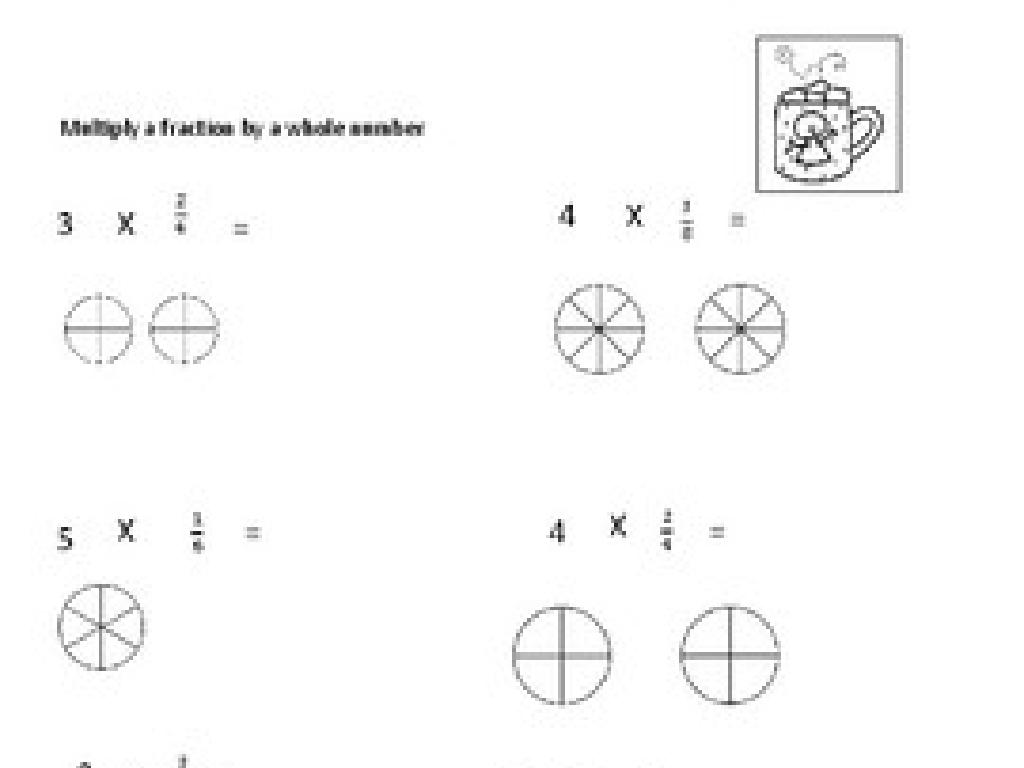Integer Addition Rules
Subject: Math
Grade: Seventh grade
Topic: Operations With Integers
Please LOG IN to download the presentation. Access is available to registered users only.
View More Content
Welcome to Integer Addition!
– Understanding Integers
– Defining Integers
– Integers include whole numbers, zero, and negatives
– Positive vs. Negative Numbers
– Positive numbers are above zero, negatives are below
– Rules for Adding Integers
– Same signs add and keep, different signs subtract
|
This slide introduces the concept of integer addition, which is a fundamental part of mathematics for seventh graders. Begin by ensuring that students understand what integers are: they include the set of whole numbers, their opposites, and zero. Highlight the difference between positive and negative numbers, using a number line if necessary to visualize their positions relative to zero. Then, explain the basic rules for adding integers: when the signs are the same, you add the numbers and keep the sign; when the signs are different, you subtract the smaller number from the larger one and keep the sign of the larger number. Provide examples for each case to solidify understanding.
Rules of Integer Addition
– Adding same sign integers
– When integers have the same sign, just add the numbers and keep the sign. Example: (+3) + (+2) = +5
– Adding different sign integers
– When integers have different signs, subtract the smaller number from the larger number and keep the sign of the larger number. Example: (+5) + (-3) = +2
– Keep sign, add absolute values
– Subtract smaller from larger, keep sign
|
This slide introduces the fundamental rules for adding integers. Emphasize that when adding integers with the same sign, students should add the numbers as if they were positive and then keep the common sign. For integers with different signs, they need to identify the larger absolute value, subtract the smaller one from it, and then keep the sign of the number with the larger absolute value. Provide several examples for each rule to ensure understanding. Encourage students to practice these rules with a variety of problems to gain confidence in identifying and applying the correct rule.
Visualizing Integer Addition
– Use a number line for addition
– A number line helps visualize the process of adding integers.
– Example: Adding positive numbers
– If we add 3 + 4, start at 3 and move 4 steps to the right to land on 7.
– Example: Adding negative numbers
– For -2 + (-3), start at -2 and move 3 steps to the left to reach -5.
– Practice with different integers
|
This slide aims to help students understand integer addition by visualizing the process on a number line. Start by explaining how a number line can be used to represent adding positive and negative numbers. Show that adding positive numbers moves us to the right on the number line, while adding negative numbers moves us to the left. Provide clear examples for both scenarios, such as adding 3 + 4 and -2 + (-3), and encourage students to practice with different integers to solidify their understanding. This visual approach will help students grasp the concept of integer addition more concretely.
Adding Integers with Same Signs
– Add integers with the same sign
– Example: 5 + 3 = 8
– Both positive, keep sign and add
– Example: -4 + (-6) = -10
– Both negative, keep sign and add
– Practice: 7 + 2, -1 + (-3)
– Try these: What are the sums?
|
When adding integers with the same sign, the rule is straightforward: keep the sign and add the absolute values. For example, with two positive numbers like 5 + 3, we simply add them to get 8. Similarly, with two negative numbers like -4 and -6, we keep the negative sign and add the absolute values, resulting in -10. It’s crucial for students to practice this concept to build confidence. Provide practice problems such as 7 + 2 and -1 + (-3) and encourage students to solve them, reinforcing the rule. This slide is aimed at helping students understand and apply the rules for adding integers with the same sign through examples and practice.
Adding Integers with Different Signs
– Example: -5 + 7
– Start with -5, move 7 steps right to reach 2
– Example: 6 + (-3)
– Start with 6, move 3 steps left to end at 3
– Practice: -8 + 5
– Start at -8, move 5 steps right to -3
– Practice: 4 + (-6)
– Start at 4, move 6 steps left to -2
|
This slide introduces students to the concept of adding integers with different signs. The first example, -5 + 7, demonstrates how starting at -5 on the number line and moving 7 steps to the right lands at 2. The second example, 6 + (-3), shows that starting at 6 and moving 3 steps to the left results in 3. For practice, students are given -8 + 5 and 4 + (-6) to solve on their own, reinforcing the concept that when adding a positive number, we move to the right on the number line, and when adding a negative number, we move to the left. The goal is for students to visualize these movements on a number line and understand that the direction depends on the sign of the second number. Encourage students to use this visualization technique for the practice problems and to check their answers with a partner.
Let’s Practice Together: Integer Addition
– Pair up for problem-solving
– Solve integer addition problems
– Use rules for adding integers with same or different signs
– Share answers with the class
– Discuss challenges faced
– Reflect on difficulties and misconceptions
|
This slide introduces a collaborative class activity focused on practicing integer addition. Students will pair up to work through a set of integer addition problems, which will help them apply the rules they’ve learned for adding integers. After solving the problems, each pair will share their answers with the class to foster a collaborative learning environment. Encourage students to discuss any challenges they encountered during the activity. This discussion can help identify common misconceptions and provide an opportunity for peer learning. As a teacher, facilitate the activity by providing guidance and ensuring that each student is engaged. Possible activities for different pairs could include adding positive integers, adding negative integers, and adding integers with different signs to cover a range of scenarios.
Real-Life Applications of Integer Addition
– Understanding temperature changes
– Adding positive or negative degrees based on weather forecasts
– Managing bank transactions
– Deposits (positive) and withdrawals (negative) affect your balance
– Applying integers in sports
– Points scored (positive) and points conceded (negative) in games
– Keeping track of debts and credits
– Borrowing (negative) and repaying (positive) money
|
This slide aims to show students how integer addition is not just a mathematical concept but a part of everyday life. For example, temperature changes can be understood as adding or subtracting degrees, which can be positive (warmer) or negative (colder). Bank transactions involve adding deposits or subtracting withdrawals. In sports, teams add points for scoring and subtract for points conceded. Understanding debts and credits in terms of integers helps in personal finance. Encourage students to think of other examples where they use integer addition without realizing it, and discuss these in the next class.
Class Activity: Integer Addition Relay
– Understand the game rules
– Solve integer addition problems
– Each correct answer lets you advance in the relay
– Collaborate with teammates
– Work together to solve problems faster
– Reflect on integer addition strategies
– Discuss what methods work best for your team
|
This activity is designed to encourage teamwork and reinforce the concept of integer addition. Divide the class into small groups and have them line up. Each team will solve integer addition problems; a correct answer allows the team to move forward. This relay-style game requires students to work together, fostering collaboration. As they play, they’ll practice quick thinking and applying integer addition rules. After the activity, lead a discussion on the strategies used and how teamwork contributed to their success. Possible variations include using different difficulty levels for problems or incorporating physical activities between math challenges.
Review and Homework: Mastering Integer Addition
– Recap today’s integer addition rules
– Homework: Integer Addition Worksheet
– Complete the provided worksheet to practice today’s lesson
– Upcoming: Integer Subtraction
– Get ready to learn how to subtract integers in our next class
– Practice makes perfect!
– Keep practicing to solidify your understanding of integer addition
|
This slide is meant to summarize the key points from today’s lesson on integer addition rules. Ensure students understand the rules by asking quick review questions. For homework, students are expected to complete the Integer Addition Worksheet, which will reinforce their understanding through practice. Preview the next class topic, integer subtraction, to mentally prepare them for the continuation of learning operations with integers. Encourage students to practice regularly, as this will help them master the concepts more effectively. Provide additional resources or tips for students who may need extra help with the homework.





